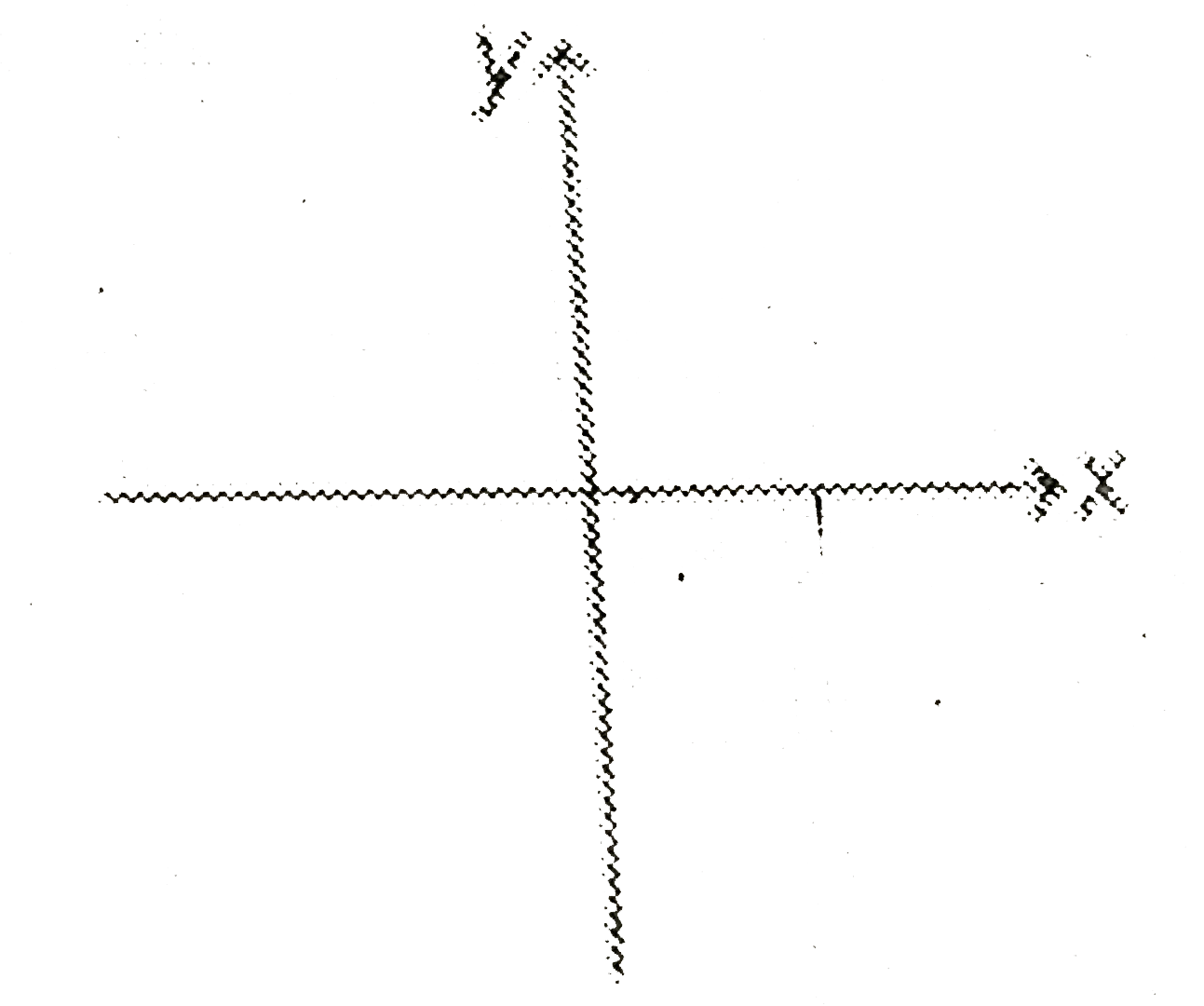Motion of a particle in x-y plane is described by a set: of following equations x=4sin(π2−ωt)m and y=4sin(ωt)m. The path of the particle will be:
circular
helical
parabolic
elliptical
To determine the path of the particle described by the equations x=4sin(π2−ωt) and y=4sin(ωt), we can follow these steps:
Step 1: Rewrite the equation for x
The equation for x can be rewritten using the sine subtraction identity:
x=4sin(π2−ωt)=4cos(ωt)
Step 2: Write the equation for y
The equation for y remains as it is:
y=4sin(ωt)
Step 3: Square both equations
Now, we will square both equations:
x2=(4cos(ωt))2=16cos2(ωt)
y2=(4sin(ωt))2=16sin2(ωt)
Step 4: Add the squared equations
Next, we add the two squared equations:
x2+y2=16cos2(ωt)+16sin2(ωt)
Step 5: Factor out the common term
Factoring out the common term 16:
x2+y2=16(cos2(ωt)+sin2(ωt))
Step 6: Use the Pythagorean identity
Using the Pythagorean identity cos2(θ)+sin2(θ)=1:
x2+y2=16⋅1=16
Step 7: Final equation of the path
Thus, we have:
x2+y2=16
This represents a circle with a radius of 4 centered at the origin (0,0).
Conclusion
The path of the particle is a circle with a radius of 4.
---
The equation for x can be rewritten using the sine subtraction identity:
x=4sin(π2−ωt)=4cos(ωt)
The equation for y remains as it is:
y=4sin(ωt)
Now, we will square both equations:
x2=(4cos(ωt))2=16cos2(ωt)
y2=(4sin(ωt))2=16sin2(ωt)
Next, we add the two squared equations:
x2+y2=16cos2(ωt)+16sin2(ωt)
Factoring out the common term 16:
x2+y2=16(cos2(ωt)+sin2(ωt))
Using the Pythagorean identity cos2(θ)+sin2(θ)=1:
x2+y2=16⋅1=16
Thus, we have:
x2+y2=16
This represents a circle with a radius of 4 centered at the origin (0,0).
The path of the particle is a circle with a radius of 4.
Topper's Solved these Questions
- JEE MAINS 2022BOOK - JEE MAINS PREVIOUS YEARCHAPTER - JEE MAINS 2022EXERCISE - Physics-Section B
10 Videos
- JEE MAINS 2022BOOK - JEE MAINS PREVIOUS YEARCHAPTER - JEE MAINS 2022EXERCISE - PHYSICS
60 Videos
- JEE MAINS 2022BOOK - JEE MAINS PREVIOUS YEARCHAPTER - JEE MAINS 2022EXERCISE - Physics -Section A
20 Videos
- JEE MAINS 2021BOOK - JEE MAINS PREVIOUS YEARCHAPTER - JEE MAINS 2021EXERCISE - Physics (Section B )
10 Videos
- JEE MAINS 2023 JAN ACTUAL PAPERBOOK - JEE MAINS PREVIOUS YEARCHAPTER - JEE MAINS 2023 JAN ACTUAL PAPEREXERCISE - Question
360 Videos
Similar Questions
Knowledge Check
A xandy co-ordinates of a particle are x=Asin(ωt)andy=Asin(ωt+π/2). Then, the motion of the particle is
 Acircular anticlockwiseBcircular clockwiseCelliptical clockwiseDrectilinear
Acircular anticlockwiseBcircular clockwiseCelliptical clockwiseDrectilinearMotion, of a particle can be described in x-direction by x=a sin ωt and y-direction by y=b cos ωt. The particle is moving on
Aa circular path of radius 'a'.Ba circular path of radius 'b'.Can elliptical path.Da straight line.A particle is acted simultaneously by mutually perpendicular simple hormonic motions x=acosωtandy=asinωt. The trajectory of motion of the particle will be
Aan ellipseBa parabolaCa circleDa straight line
A particle is acted simultaneously by mutually perpendicular simple harmonic motions x=a cosωt and y=asinωt. The trajectory of motion of the particle will be
View SolutionEquation of motion in the same direction is given by y1=Asin(ωt−kx), y2=Asin(ωt−kx−θ). The amplitude of the medium particle will be
View SolutionA particle is subjected to two mutually perendicular simple harmonic motion such that its x and y coordinates are given by :
x=2sinω & y=2sin(ωt+π2)
The path of the particle will be
View SolutionThe displacement of a particle is represented by the equation y=3cos(π4−2ωt).
The motion of the particle is
View SolutionTwo parallel S.H.M.s have equations y1=A1sin(ωt+2π) and y2=A2sin(ωt+4π). The amplitude of the resultant motion is
View Solution
